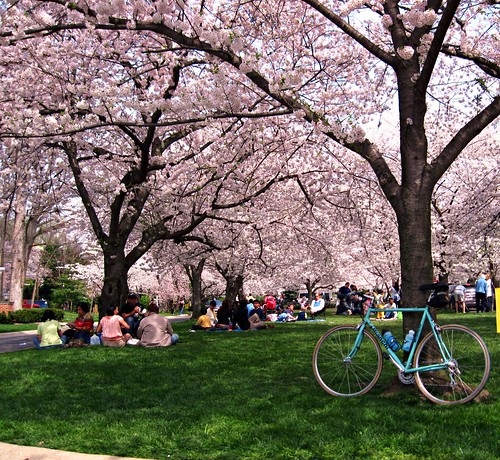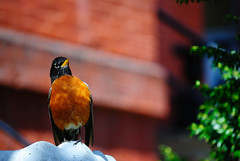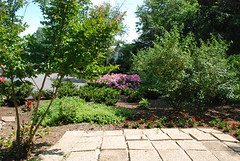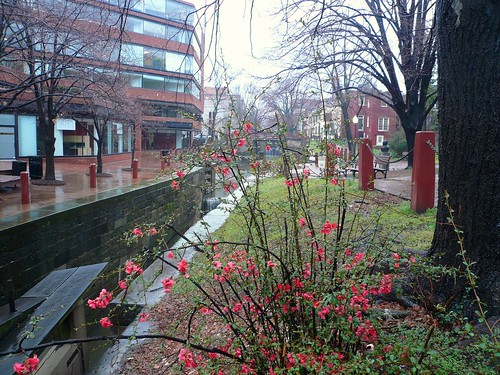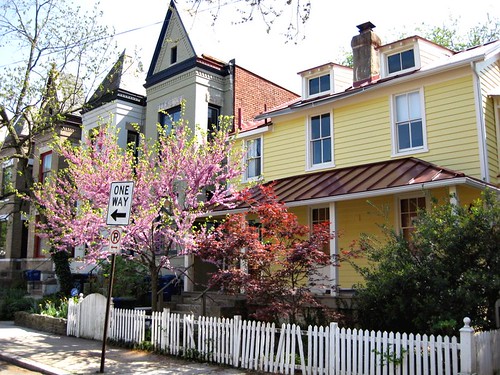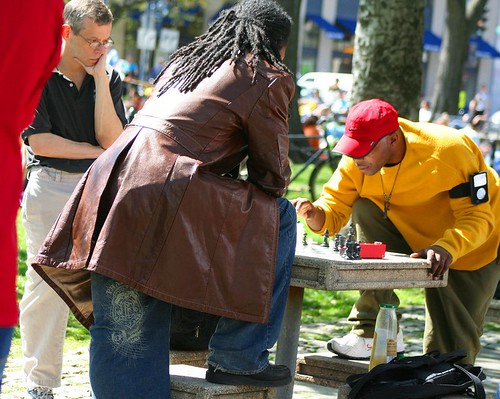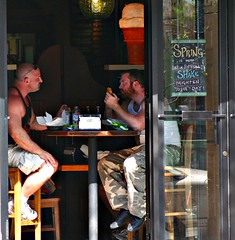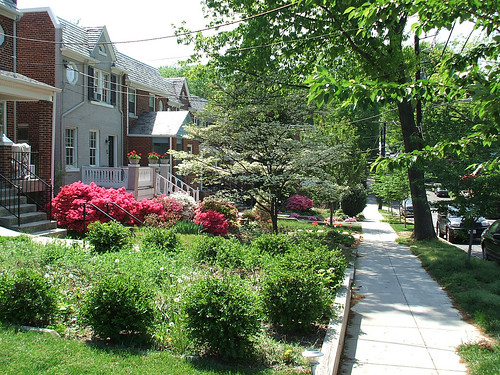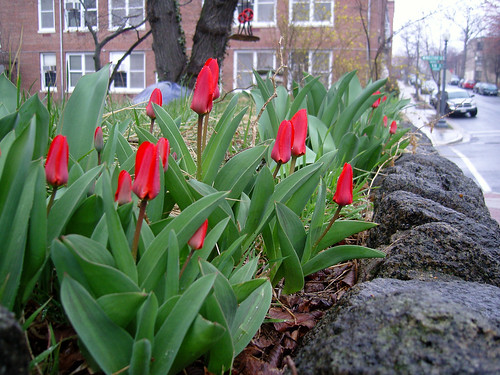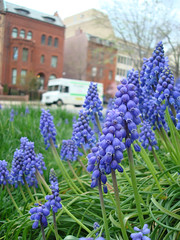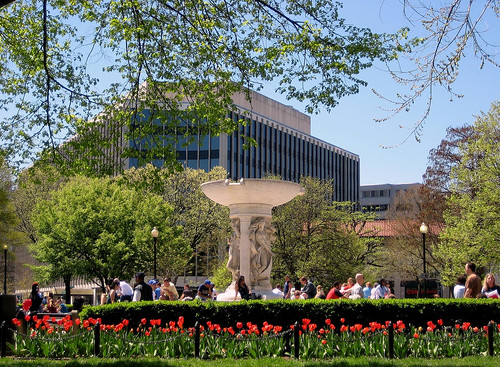Celebrating the vernal city (photo essay)

Posted April 15, 2011 at 1:32PM
In case you haven’t noticed, spring has arrived. Here on the East Coast, the buds on the trees are about to burst into blossom (dogwoods) or leaves (maples and oaks). Most of the neighborhood cherry trees have already moved from blossoms to leaves, though there are late bloomers here and there. Tulips, daffodils, and all sorts of ground flora are also renewing themselves, and the robins are back on my block.
This is a great time to be in nature, such a time of renewal and optimism (politics aside). But it is also a great time to be in the city, especially one that mixes urban hardscape and nature as well as my city, Washington, does.
This was the point of the most recent Shaping the City column in The Washington Post, written as always by architecture professor and urban thought leader Roger Lewis. This blog is in a lot of ways modeled on Roger’s excellent columns (plus a bit of Neal Peirce), which have run in semi-obscurity, but run nonetheless, every two weeks or so for decades in the Saturday edition of the Post. On days when the column is published, it’s the first thing I read. Roger was influencing smart growth and urbanism before either were called by those names.
From his latest, “An urban guy’s springtime reverie”:
“With the retreat of winter, debris is being swept off terraces, decks and balconies. Homeowners, along with landscape contractors and nurserymen, are beginning to attend to lawns and gardens — pruning, spreading mulch, planting annuals, fertilizing trees and shrubs. Brown grass is again turning green.
“The arrival of pleasant weather motivates some to walk a half-mile or even a mile rather than driving or riding transit. In early spring the population density of the public realm soars. People flock to the growing number of cafes and restaurants offering outdoor seating, animating downtown and edge-city streetscapes as they dine.”
I love the observation I bolded above. 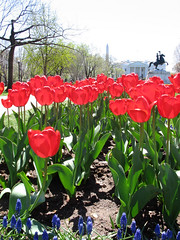 It’s not just nature that renews itself this time of year. Our cities become animated again. I just had the pleasure of walking back to the office from a lunch date several blocks away, past Lafayette Square (left), filled with fresh greenery, tulips, and people.
It’s not just nature that renews itself this time of year. Our cities become animated again. I just had the pleasure of walking back to the office from a lunch date several blocks away, past Lafayette Square (left), filled with fresh greenery, tulips, and people.
DC is blessed with great public spaces and, in the city and central areas of suburbs, great walkability. In July and August the heat and humidity will make these places a bit less hospitable, though in my experience a cold beverage of choice helps. But now is a perfect time to acknowledge and celebrate good urbanism.
Roger also points to the abundance of urban wildlife here, and the natural systems that support it:
“A remarkable variety of wildlife share our appreciation for Washington’s urban landscape. The city’s deciduous and evergreen trees, ornamental shrubs and broad lawns are habitats for many species of birds, including finches, cardinals, mourning doves, tufted titmice, hummingbirds, woodpeckers and, of course, messy Canada geese.
Predators such as red-tail hawks, turkey vultures and peregrine falcons regularly cruise overhead.
“Moreso than many cities, metropolitan Washington is home to an assortment of freely roaming mammals . . . [Deer,] foxes and coyotes prowl the Washington area, along with raccoons and possums. Gray squirrels are everywhere, and in recent years chipmunks have invaded. But you won’t see dead squirrels, chipmunks, raccoons, moles, mice or rats lying around outside except when flattened in the street. Scavengers quickly consume the carcasses, an indication that America’s capital city encompasses a relatively complete wildlife ecosystem.”
Metro Washington enjoys 46 percent tree cover, compared to the 40 percent recommended by the conservation organization American Forests, and compared to the national urban average of 27 percent. The group estimates that DC’s vegetated green infrastructure produces stormwater absorption benefits sufficient to save $4.7 billion worth of engineered retention facilities, while also removing 20 million pounds of pollutants from the air each year, a benefit worth $49.8 million annually.
Roger’s column, which can be accessed here, also rightly points to the soil retention function of DC’s vegetation, as well as the natural cooling provided by shade trees, obviating energy consumption and carbon emissions that would otherwise be required by additional summer air conditioning. He reminds us that this is a good time of year to take note and celebrate “the benefits of living in a rich, urban environment, one in which humans, plants, animals and architecture coexist.”
I agree. I'll be speaking to a state conference of landscape architects in about two weeks, and I'll be talking more about community than about nature per se. But landscape architecture, when done well, is where the two meet. What a great time of year to make that point.
All photos are of Washington, DC. Move your cursor over the images for credit information.
